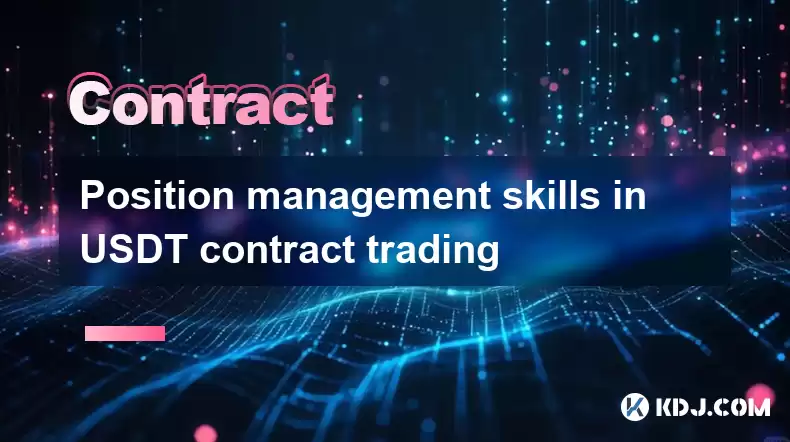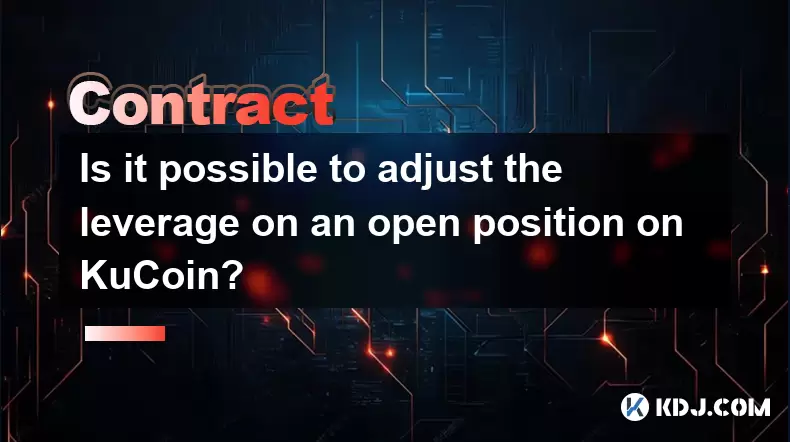-
 Bitcoin
Bitcoin $116400
-0.36% -
 Ethereum
Ethereum $4033
3.40% -
 XRP
XRP $3.302
-1.26% -
 Tether USDt
Tether USDt $1.000
-0.02% -
 BNB
BNB $796.1
1.67% -
 Solana
Solana $177.8
1.89% -
 USDC
USDC $0.9999
0.00% -
 Dogecoin
Dogecoin $0.2314
4.09% -
 TRON
TRON $0.3381
0.14% -
 Cardano
Cardano $0.7989
1.22% -
 Stellar
Stellar $0.4496
-1.84% -
 Chainlink
Chainlink $20.42
9.42% -
 Hyperliquid
Hyperliquid $41.17
0.88% -
 Sui
Sui $3.914
3.77% -
 Bitcoin Cash
Bitcoin Cash $584.7
1.52% -
 Hedera
Hedera $0.2632
-0.54% -
 Avalanche
Avalanche $24.09
3.40% -
 Ethena USDe
Ethena USDe $1.001
-0.02% -
 Litecoin
Litecoin $123.2
1.33% -
 Toncoin
Toncoin $3.318
-0.04% -
 UNUS SED LEO
UNUS SED LEO $8.984
-0.05% -
 Shiba Inu
Shiba Inu $0.00001323
2.85% -
 Uniswap
Uniswap $10.90
4.41% -
 Polkadot
Polkadot $3.999
3.34% -
 Dai
Dai $1.000
0.01% -
 Cronos
Cronos $0.1630
9.64% -
 Bitget Token
Bitget Token $4.484
0.82% -
 Monero
Monero $272.4
2.44% -
 Pepe
Pepe $0.00001173
6.03% -
 Aave
Aave $290.8
2.88%
Position management skills in USDT contract trading
Mastering USDT contract trading demands skillful position management: control risk via proper sizing, leverage, and diversification; utilize stop-loss and take-profit orders; and continuously review & adapt your strategy for long-term success.
Mar 07, 2025 at 08:42 am

Key Points:
- Understanding position sizing is crucial for risk management in USDT contract trading.
- Leverage utilization significantly impacts potential profits and losses.
- Effective position management involves adapting to market volatility and your risk tolerance.
- Diversification across different trading pairs can reduce overall portfolio risk.
- Utilizing stop-loss orders and take-profit orders are essential for automated risk mitigation.
- Regular review and adjustment of your trading strategy are necessary for long-term success.
Position Management Skills in USDT Contract Trading
USDT-margined perpetual contracts offer leveraged exposure to cryptocurrencies without the complexities of futures contracts. However, this leverage amplifies both profits and losses, making effective position management paramount. Ignoring this aspect can quickly lead to significant losses. This article delves into the key skills needed for successful USDT contract trading.
Understanding Position Sizing
Determining the appropriate position size is the cornerstone of risk management. This involves calculating how much capital to allocate to each trade relative to your overall portfolio. A common approach is to risk only a small percentage (e.g., 1-2%) of your capital on any single trade. This limits potential losses even if the trade goes against you. Over-leveraging, on the other hand, can quickly wipe out your account.
Leverage and its Impact
Leverage magnifies both gains and losses. While it can boost profits, it also increases the risk of significant losses. Choosing the appropriate leverage depends on your risk tolerance, trading strategy, and market conditions. High leverage amplifies volatility, making even small price movements potentially impactful. Conservative leverage (e.g., 2x-5x) is generally recommended for beginners.
Adapting to Volatility
Crypto markets are notoriously volatile. Effective position management requires adapting your strategy to these fluctuations. During periods of high volatility, reducing your position size or leverage is prudent. Conversely, during calmer periods, you might consider slightly increasing your exposure, but always within your risk tolerance. Understanding market sentiment and news events is vital for this adaptation.
Diversification Across Trading Pairs
Don't put all your eggs in one basket. Diversifying your positions across multiple trading pairs reduces the overall risk to your portfolio. If one cryptocurrency underperforms, the losses might be offset by gains in others. However, diversification should be strategic, not simply spreading capital randomly. Focus on pairs that are not highly correlated.
Utilizing Stop-Loss and Take-Profit Orders
Stop-loss orders automatically close your position when the price reaches a predetermined level, limiting potential losses. Take-profit orders automatically close your position when the price reaches a predetermined profit target, securing your gains. These orders are crucial for automated risk management, even when you are not actively monitoring the market. Setting these orders appropriately is a key skill.
Regular Review and Adjustment
Your trading strategy should not be static. Regularly review your performance, identifying successful and unsuccessful trades. Analyze market trends and your own emotional responses to trading decisions. Adjust your position sizing, leverage, and diversification strategies based on your findings. This continuous improvement process is vital for long-term success.
Advanced Techniques
Hedging involves taking offsetting positions in related markets to reduce risk. For example, if you're long Bitcoin, you might short Ethereum to mitigate losses if the overall crypto market declines. This advanced technique requires a thorough understanding of market correlations. Grid trading involves automatically placing buy and sell orders at predetermined price intervals. This strategy aims to profit from price fluctuations within a defined range.
Common Questions and Answers:
Q: What is the best leverage to use in USDT contract trading?
A: There's no single "best" leverage. It depends on your risk tolerance, trading experience, and the specific market conditions. Beginners should start with low leverage (2x-5x) and gradually increase it as they gain experience.
Q: How do I calculate my position size?
A: A common method is to risk a small percentage (e.g., 1-2%) of your total capital on each trade. This percentage is multiplied by your total capital to determine the amount you should risk per trade. This amount is then divided by your stop-loss price to determine the number of contracts you can purchase.
Q: What are the risks of using high leverage?
A: High leverage magnifies both profits and losses. While it can lead to larger gains, it significantly increases the risk of liquidation – losing your entire investment if the market moves against you. It also increases the emotional stress of trading.
Q: How important is diversification in USDT contract trading?
A: Diversification is crucial for managing risk. By spreading your capital across multiple trading pairs, you reduce your dependence on the performance of any single asset. This helps to mitigate potential losses if one cryptocurrency underperforms.
Q: What is the role of stop-loss orders?
A: Stop-loss orders automatically close your position when the price reaches a predetermined level, limiting potential losses. They are a crucial tool for protecting your capital, especially during periods of high volatility or when you are unable to constantly monitor the market.
Q: How often should I review my trading strategy?
A: Regularly reviewing your trading strategy is essential. The frequency depends on your trading style and market conditions, but a weekly or monthly review is a good starting point. This review should include analyzing your wins and losses, assessing market trends, and adjusting your approach as needed.
Disclaimer:info@kdj.com
The information provided is not trading advice. kdj.com does not assume any responsibility for any investments made based on the information provided in this article. Cryptocurrencies are highly volatile and it is highly recommended that you invest with caution after thorough research!
If you believe that the content used on this website infringes your copyright, please contact us immediately (info@kdj.com) and we will delete it promptly.
- Shiba Inu (SHIB) in the Crypto Landscape: Community, Trends, and Future Outlook
- 2025-08-09 20:30:12
- Lasers in Modern Warfare: Iron Beam and the Future of Defense
- 2025-08-09 20:30:12
- Maxi Doge Presale: The Meme Coin That's Pumping Iron and Prices!
- 2025-08-09 19:10:11
- Rare Coin Warning: Don't Get Fooled by That 1p Coin!
- 2025-08-09 18:50:12
- Cardano, Unilabs, and Tron Price: Decoding the Latest Crypto Buzz
- 2025-08-09 18:30:12
- Aerodrome Finance: Price Targets and the Bullish Channel - What's Next?
- 2025-08-09 18:50:12
Related knowledge

Is it possible to adjust the leverage on an open position on KuCoin?
Aug 09,2025 at 08:21pm
Understanding Leverage in KuCoin Futures TradingLeverage in KuCoin Futures allows traders to amplify their exposure to price movements by borrowing fu...

What is the difference between realized and unrealized PNL on KuCoin?
Aug 09,2025 at 01:49am
Understanding Realized and Unrealized PNL on KuCoinWhen trading on KuCoin, especially in futures and perpetual contracts, understanding the distinctio...

How does KuCoin Futures compare against Binance Futures in terms of features?
Aug 09,2025 at 03:22am
Trading Interface and User ExperienceThe trading interface is a critical component when comparing KuCoin Futures and Binance Futures, as it directly i...

How do funding fees on KuCoin Futures affect my overall profit?
Aug 09,2025 at 08:22am
Understanding Funding Fees on KuCoin FuturesFunding fees on KuCoin Futures are periodic payments exchanged between long and short position holders to ...

What is the distinction between mark price and last price on KuCoin?
Aug 08,2025 at 01:58pm
Understanding the Basics of Price in Cryptocurrency TradingIn cryptocurrency exchanges like KuCoin, two key price indicators frequently appear on trad...

What are the specific maker and taker fees on KuCoin Futures?
Aug 08,2025 at 08:28am
Understanding Maker and Taker Fees on KuCoin FuturesWhen trading on KuCoin Futures, users encounter two primary types of fees: maker fees and taker fe...

Is it possible to adjust the leverage on an open position on KuCoin?
Aug 09,2025 at 08:21pm
Understanding Leverage in KuCoin Futures TradingLeverage in KuCoin Futures allows traders to amplify their exposure to price movements by borrowing fu...

What is the difference between realized and unrealized PNL on KuCoin?
Aug 09,2025 at 01:49am
Understanding Realized and Unrealized PNL on KuCoinWhen trading on KuCoin, especially in futures and perpetual contracts, understanding the distinctio...

How does KuCoin Futures compare against Binance Futures in terms of features?
Aug 09,2025 at 03:22am
Trading Interface and User ExperienceThe trading interface is a critical component when comparing KuCoin Futures and Binance Futures, as it directly i...

How do funding fees on KuCoin Futures affect my overall profit?
Aug 09,2025 at 08:22am
Understanding Funding Fees on KuCoin FuturesFunding fees on KuCoin Futures are periodic payments exchanged between long and short position holders to ...

What is the distinction between mark price and last price on KuCoin?
Aug 08,2025 at 01:58pm
Understanding the Basics of Price in Cryptocurrency TradingIn cryptocurrency exchanges like KuCoin, two key price indicators frequently appear on trad...

What are the specific maker and taker fees on KuCoin Futures?
Aug 08,2025 at 08:28am
Understanding Maker and Taker Fees on KuCoin FuturesWhen trading on KuCoin Futures, users encounter two primary types of fees: maker fees and taker fe...
See all articles

























































































